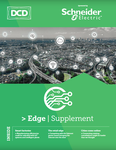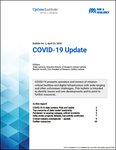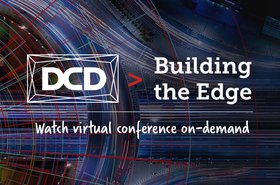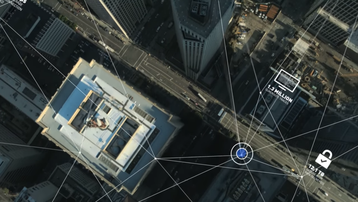The gravity of data is shifting, and the Internet is not well-architected to support today’s multi-directional traffic flows, which have only increased as more people transition to work and learn from home environments in the wake of COVID-19.
Bottlenecks are arising at the Edge
While the world adapts to the new realities of social distancing, organizations require their employees to work remotely, and most all of our daily activities have moved online, the capacity of existing networks has become strained. A recent posting on the World Economic Forum's website, "Will the Coronavirus Break the Internet?” reports that in some parts of the world, Internet usage has increased 50 percent. Early in March, Internet Exchanges in Amsterdam, Frankfurt, and London experienced increases in traffic up to 20 percent, and the Internet Exchange in Milan jumped 40 percent on the day the government of Italy issued shelter-in-place orders.
Since March 1, a US-based fiber and wireless provider reports a 32 percent increase in upstream traffic growth and an 18 percent increase in downstream traffic, with VoIP and video conferencing up 228 percent. Another network provider cites increases in VPN usage of 49 percent and online gaming up by 115 percent as more and more people work and play from home. Interestingly enough, even as Cisco forecasts that by 2022, video traffic will account for 82 percent of all traffic, that same network provider reports that video is already up by 36 percent.
Now, more than ever before, it’s clear that the volume, velocity, and variety of data traffic flows mandate a dramatic rearchitecting of the Internet to make it more customer-centric.
The Edge and the core are interoperable
In the recent past, technological developments such as the Internet of Everything (IoE) and Artificial Intelligence have been shifting the gravity of data and compute from the core to the edge. By allowing data to be analyzed at the edge, the shift to local compute functionality is improving overall enterprise agility as well as strategic and operational decision-making. However, at the same time, it’s resulting in traffic flows and data volumes that legacy network models cannot support. The Edge is the lowest latency point of demarcation between service delivery and consumption. Moving compute and data storage closer to end-users, at the Edge, enables higher capacity, lower latency, increased data security, and reduced expenditures for enterprises.
As the world’s citizens maintain safe social distancing guidelines even as business attempts to cautiously reopen and data traffic flows continue to surge, cloud and carrier-neutral data centers in Tier 2 and Tier 3 markets that provide peering at the Edge will remain essential in helping to alleviate any network bottlenecks. Customers have always expected to have access to their content and applications on demand, anywhere, at any time. But now the very fabric of our personal and professional lives depends upon it.
Edge computing reduces the amount of data flowing to and from the core network by processing data closer to the source and prioritizing traffic. By pushing data processing away from a centralized core and distributing it among localized edge data centers, companies can greatly reduce the distance data must travel before services can be delivered, leading to lower latency, improved performance, and a more seamless experience for their customers.
That said, the Edge and the core must work together to satisfy enterprise and end-user needs for high-speed connectivity that can support the use of latency-sensitive business applications and bandwidth-intensive content. This realization of this new network model will enable companies to optimize traffic flows and choose for themselves where data computing should occur, according to latency, performance, and cost requirements. The Edge and the core are interoperable.
While we cannot anticipate with certainty where our way of life or economy will be in two weeks, two months, two quarters, or a year from now, two things are certain. We will recover, even as our digital world expands at a pace few industry leaders might have predicted. And to alleviate global network congestion, enterprise organizations, edge data center, cloud and service providers will have to work together to solve computing and networking challenges as data traffic inevitably soars to unprecedented levels. Moreover, to accommodate multi-directional traffic flows, edge data centers in all their various form factors — from local reach wholesale data centers of 1MW to 10MW, to hyperlocal micro-edge data centers of 10kW to 1MW, to greenfield builds of 10 to 100-plus MW facilities for hyperscale deployments — must be designed and deployed wherever customers’ insatiable need for data and connectivity demands.
More from DCD
-

-

-

Broadcast DCD>Building the Edge VIRTUAL


